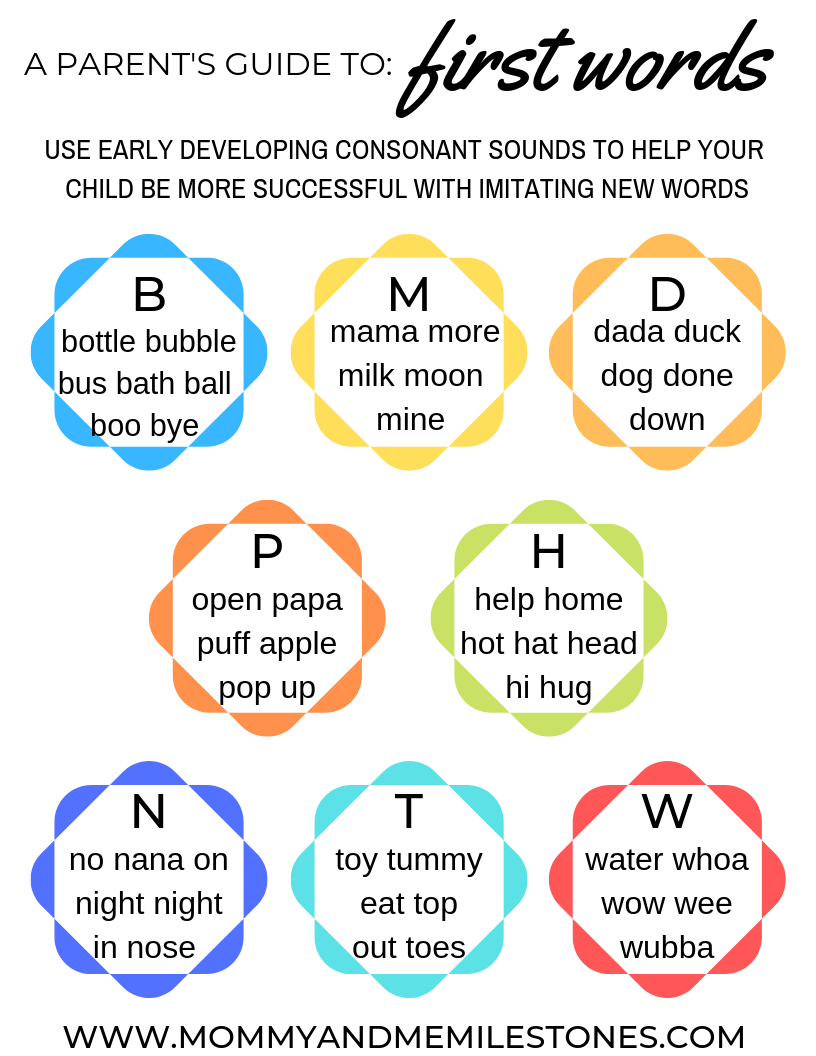The SECRET to Getting Your Child to Talk
- Laura Brown

- Mar 28, 2019
- 4 min read
Updated: May 6, 2022

First words are among some of the most anxiously awaited milestones for our children. Every parent eagerly anticipates hearing their child's sweet voice say "mama" or "dada". First words typically emerge around the age of one. The average range for this milestone is between 10 and 14 months. For some parents, these words arrive right on time, while others are left waiting. So, what is the SECRET to getting your child to talk?
You can get your child off to a great start by implementing the tips below. If you want to learn more to include the exact steps to follow to get your child saying more words, make sure to check out The First 50 Words Course for parents.
Follow these THREE steps to put your child on the right path toward those precious first words.
1. Teach them the power of communication!
Communication begins long before first words. Infants can cry and smile to communicate, while older babies can use eye gaze and early gestures like reaching and pointing to make their wants and needs known. Respond to your child’s early attempts to communicate. When they make eye contact and vocalize, treat it as if they are saying true words and talk back to them. When they look toward an item they want, model the word for that item. Teach them to use early gestures like waving hello, reaching up to be picked up, and pointing to things they want. Model these gestures for them as much as possible. To expand your child’s opportunities for nonverbal communication, introduce some simple sign language that will allow them to communicate with you in a variety of ways. Teach signs for “more”, “eat”, “milk”, “all done”, “please”, “bath”, “outside”, and “help” to start!
2. Build verbal imitation skills!
Imitation is how children learn language. Start early by imitating your young baby’s vocalizations and cooing. If they blow raspberries, shout “ah!”, or say “ooooo’’, say it back to them. Encourage them to go back and forth with you, taking turns making these silly sounds. Around 6 months and up, you can start working on imitation in play. Model play sounds for vehicles and animals and add sound effects to your actions. Say “ta ta ta” as you use a hammer. Say “ba ba ba” as you bounce a ball. Exclaim “ohhhhh” as you look at bubbles. Sing nursery songs using big hand motions, encouraging your child to join in by helping their hands do the motions for the song. Be fun, excited, and cheerful, modeling words like “uhoh!” “wee!”, and “yay!” as you play. These protowords communicate emotions and are phonetically very simple for your baby to produce. Once your child can imitate play sounds, work on imitating words with early developing consonant sounds to promote successful imitation. Kids develop the /m/, /b/, /d/, /p/, /t/, /w/, /n/, and /h/ sounds first and are also more likely to use sounds in words if they are already babbling those sounds. Pay attention to the sounds your child is babbling and start there! See *A Parent's Guide to First Words* for some ideas on words to try!
3. Give your child MANY opportunities to communicate!
Make them work :) (by communicating) to get the things they want and need. A speech therapist or early interventionist may use the term “communication temptation”. These are intentional changes to your child’s environment that give them a reason to initiate communication with you. Some kids need this extra nudge to communicate more than others, but communication temptations can be very effective in increasing spontaneous word use for all young children. Keep their favorite toys, snacks, and even their water bottle in sight, but out of reach, so that they have to ask to get them. When they get stuck or need help with a toy, wait, and let them come to you and ask for help. Put favorites in containers they can’t open so that they bring them to you, or pull you over to get the item they want. Play with toys that require adult assistance to operate, like a balloon pump, ball popper, or wind-up toy. Once they indicate that they want something, hold that item up by your face, model the word, and wait 3 seconds for them to repeat that word. Try this twice before giving them the item in question. Give choices whenever possible for snack, toys, and clothes to give them a chance to say (or point to) the one they want. Set them up to communicate, but DON'T set them up to fail. If your child is not imitating sounds or using any words yet, allow them to use gestures (pointing, pulling you towards an item, or use simple signs) to communicate. Always remember the rule of two! Try twice to get them to say a word, and move on. This will help reduce frustration for both you AND your child!

Get ALL of the tips and the exact steps to follow to set your child on the path to their first words in my First 50 Words Course for parents of children 0-36 months.
Use the link below for more details and to sign up!
If you are still waiting on those precious first words, I hope you'll join me in the course to continue this conversation. This course is recommended for parents of children under the age of 3 that have less than 50 words. If you are an SLP, you can earn professional development hours in the professional version of this course which has more specialized information for SLPs. Learn more here!
Cheers to First Words!
Laura Brown :)



